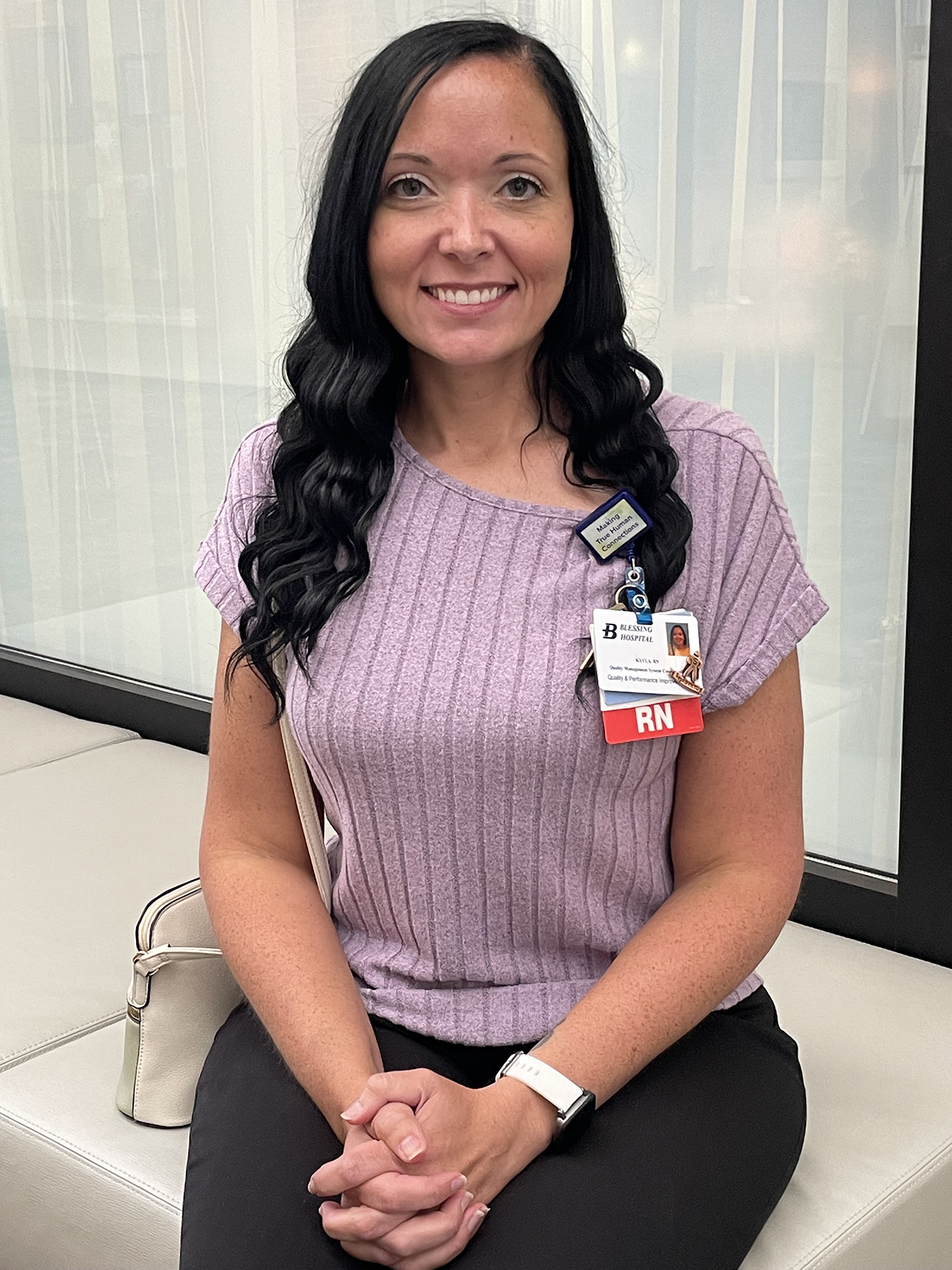
Kayla Sargent’s life was going great in 2009. She was a new registered nurse and a new mom. Then, she had gallbladder surgery.
“I had severe abdominal pain about a week after the surgery. No medication could control the pain. It was unbearable, the worst pain I had ever felt,” she said.
Kayla’s surgery was done at a non-Blessing Health hospital and it turns out her bile duct was not closed after surgery. Bile is a fluid stored in the gallbladder that helps with digestion. When bile leaks into the body it can cause pain, inflammation and infection in the abdominal cavity.
Kayla’s blood pressure dropped and her heart rate skyrocketed. She developed sepsis. If not treated quickly, sepsis can be fatal.
What is sepsis?
Sepsis is the body’s overwhelming response to infection. It can lead to tissue damage, organ failure, amputations and death. Sepsis kills 350,000 people each year in the U.S., 1 every 2 minutes.
Sepsis is sneaky because it may appear as a common infection or other medical condition. Too often times, a person becomes very sick due to sepsis and by the time the illness is diagnosed, it can be too late for effective treatment. Every hour treatment is delayed, the risk of death increases by 8 percent. Death can occur in as few as 12 hours.
Kayla underwent emergency surgery and was hospitalized for a week. When she was discharged, she needed to use a special pump for two weeks to drain the bile-induced infection. Recovery took six weeks.
“It was a very big shock to develop sepsis from what was supposed to be a simple surgery,” Kayla said.
Shock part 2
Fast forward to 2023. A kidney infection led to a second bout of sepsis for Kayla. Her blood pressure dropped into the 80 over 40 range, and her lactic acid was very high, which can cause a number of serious complications including organ failure, irregular heart rhythm, seizures, coma and death.
By this time,14 years after her first bout of sepsis, Kayla had joined Blessing Health. It was coincidence that she was hired in the Quality and Performance Improvement Department where she works with the sepsis surveillance program. Due to her previous personal experience with sepsis and her new job, this time Kayla knew exactly what was happening to her. The sepsis was treated and she recovered fully after six weeks.
Sepsis care at Blessing Health
Blessing Health uses a sepsis surveillance program that helps caregivers identify sepsis as early as possible. The program features sepsis-specific training for bedside caregivers supported by the latest patient monitoring technology.
Laura Weigand, BSN, RN, CCRN, TNS, Quality and Performance Improvement, was a driving force behind the sepsis surveillance system and treatment protocol at Blessing Health. Her late husband, Travis, was hospitalized with sepsis for nearly two months in 2016 and suffered two amputations because of the effects of the disease.
“I think we are doing really well with our program when compared to other hospitals,” Kayla observed. “It’s the teamwork, the effort everyone puts into the surveillance program.”
After two bouts with the disease, Kayla is hopeful her personal experiences with sepsis are over.
“It’s not fun,” she said.
Kayla advises others to be alert for the symptoms of sepsis in themselves and loved ones. To remember the symptoms, think of the word TIME:
T = Temperature. Higher or lower than normal
I = Infection. May have signs and symptoms of an infection
M = Mental decline. Confused, sleepy, difficult to wake.
E = Extremely ill. Severe pain, discomfort, shortness of breath
For more information on sepsis go to https://www.blessinghealth.org/sepsis
